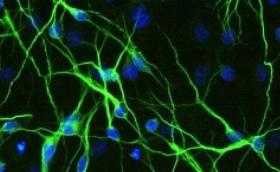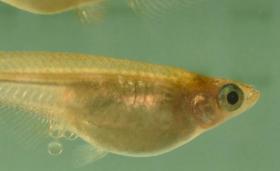INRAE: an institute with an ethical approach to animal experimentation
Transparency around animal experimentation
Research institutes have an obligation to provide the general public with clear, comprehensive information as to how and why animal research is being employed.
Indeed, all experimental facilities approved for animal research must submit an annual report to a European database in which they detail their project objectives and the species-specific numbers of animals they have used. The statistics for France are published on the official website of the Ministry of Higher Education, Research, and Innovation (MESRI).
In addition, non-technical summaries of all animal-based research projects are shared with the general public.
Furthermore, in November 2020, a transparency charter was signed by several public and private research establishments, all members of the French Interprofessional Group on Research Reflection and Communication (GIRCOR). INRAE was among the signatories, who pledged to provide information to and engage in exchanges with the general public.
The establishments made the following four specific commitments:
- To explain how and why animals were needed for scientific and regulatory purposes
- To disseminate information to the general public and the press via the institutes' array of communication media, including official websites
- To facilitate the dissemination of information to the general public and the press via established channels
- To produce a yearly document summarising the progress made in sharing information with the public
The 3Rs: guiding principles for French and European regulations
French and European regulations on animal experimentation are based on the 3Rs for humane animal research: REPLACE, REDUCE, and REFINE
REPLACE
REPLACE animal models with alternative approaches:
- in silico techniques such as computer modelling or deep learning
- in vitro techniques such as cell cultures or organoids
Read the article [in French] about the book Alternatives à l’expérimentation animale, published in 2020 by Editions QUAE.
Two examples of replacement methods:
- Researchers developed an in vitro technique for studying tick bites, for which they received the 2015 Alfred Kastler Award .
- Researchers developed an in vitro prion amplification technique to reduce the need for animal research, for which they received the 2017 Alfred Kastler Award.
An example where replacement is not currently possible:
Specific mouse models are used to study how sleep and circadian disruption promotes breast cancer.
REDUCE, REFINE, REHABILITATE
REDUCE the number of animals to the bare minimum needed to obtain reliable results by using alternatives, such as statistical studies, meta-analyses, and past research (even if unpublished).
REFINE research and knowledge that can help improve animal welfare and decrease animal pain and stress.
A 4th "R", REHABILITATE, is currently being developed: physical condition permitting, animals should be rehomed to trustworthy facilities after experiments have ended.
Principles approved by the INRAE Scientific Advisory Board in 2019 .
Summary of current regulations:
- Animal housing conditions and scientific procedures must be approved by the prefecture, which grants institutional certification to establishments performing animal research. The prefecture monitors whether institutes properly comply with regulatory standards.
- Research projects must be designed and carried out by trained, qualified personnel who have successfully completed a mandatory training course on regulatory requirements. Such courses are approved by the French Ministry of Agriculture and Food and last 1–3 weeks, depending on the person's level of involvement with research animals. Personnel must regularly refresh their knowledge via continuing education programmes (at least three days of training over a six-year period [pro rata]).
- Research projects receive ministerial approval based on an assessment carried out by an ethics committee whose composition respects regulatory requirements.
Animal models at INRAE
INRAE uses a wide variety of animal species to address scientific questions:
Model animals are used in fundamental research, which seeks to clarify biological mechanisms. Common model animals include fish (e.g., zebrafish and medaka), mini pigs, rabbits, and rodents (e.g., mice and rats). In France, mice are the most frequently used model animal (62% of animal research). Next come fish (13%, all species combined), followed by rats (8%) and rabbits (7%) (French National Statistics, 2018).
Farm animals are used in research on agriculture and animal health, employing a One Health approach. The main topics of study are reproduction and genetics; animal nutrition, behaviour, and welfare; and agro-ecological farming. Common farm animals include cattle, goats, sheep, horses, rabbits, birds (e.g., chickens, turkeys, quails, and ducks), fish (mainly trout), and pigs.
Research may also be performed on captive and non-captive wild animals, including badgers, deer, frogs, and fish to explore issues related to biodiversity, environmental conservation, and wildlife conservation.
Examples of research using animal models

Mouse model: low levels of polyunsaturated fatty acids can induce imbalance in the brain reward system, resulting in conditions such as depression, schizophrenia, and bipolar disorders (learn more here).

In vitro model employing medaka cells: discovery of a new cell function in fish that holds promise for aquaculture and medical research (learn more here).

In vitro model employing ewe oocytes: environmental doses of bisphenol S, used as a replacement for bisphenol A, alter the developmental capacities of oocytes and embryos in ewes (learn more here).

Mini pig model: in obese animals, a decreased ability to sense blood glucose levels may contribute to the development of type II diabetes, a result obtained using non-invasive imaging (learn more here).
INRAE research on animal welfare
INRAE carries out extensive research on animal behaviour and farm animal welfare. The institute has produced joint scientific reports on animal pain and animal consciousness.
As a result of this work, we better understand emotional responses and pain perception in animals, knowledge that can inform future work in the field of animal experimentation. INRAE is also currently leading an assessment of animal welfare in farmed species.
Furthermore, INRAE is head of the French Reference Centre for Animal Welfare (CNR BEA). CNR BEA has been tasked with disseminating well-supported scientific and technical information on animal welfare, producing joint scientific reports on the subject, and identifying gaps in training.
